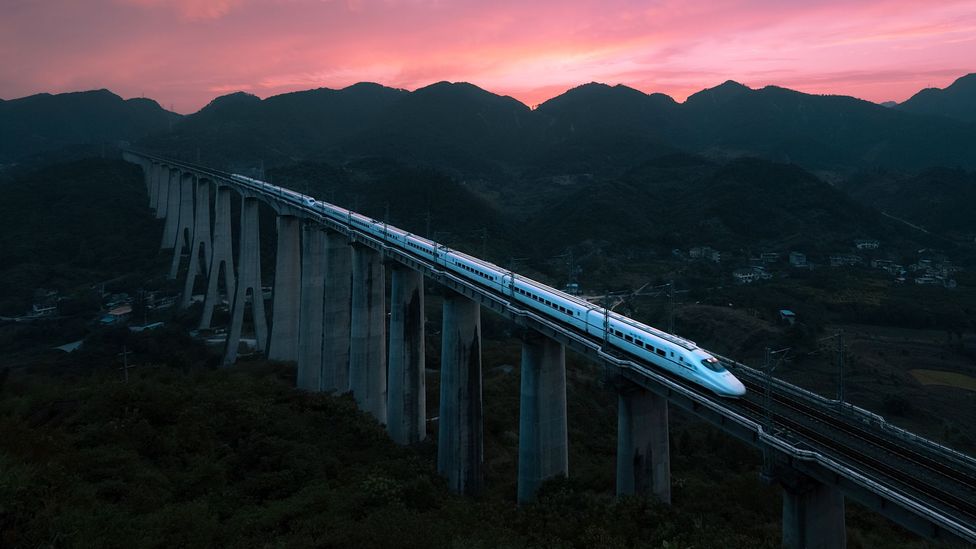
This is not going to happen simply because the alternatives are not just slow but also consume fuel as well over vastly longer time scales.
a great example that i would love to see are giant airships capable of carrying up to eight shipping containers or approaching 1000 tons of total payload. These can now be drone operated as well. Problem is that the top speed is likely around eighty miles per hour without exponentially increasing drag. Or less. This still means that such a craft can travel around 2000 milles per day under continous trust and using winds to assist or not.
Hauling fresh fruit from Mexico will likely take an average of two days if we want to supply New York and Chicago. So fuel is still an issue and batteries are still unlikely.
I still would like to see an airship fleet to haul cargo worldwide in competition with our cargo ships. fuel is not so important then as shippers do pay for time.
We are also soon going to rocket cargo around the world in minutes as well.
What would a flying-free world look like?
(Image credit: ViewStock/Alamy)
By Jocelyn Timperley23rd May 2022
Aeroplanes are incredibly polluting, but could we ever live completely without them?
https://www.bbc.com/future/article/20220519-what-if-we-all-stopped-flying?
Aviation has long been a pain in the neck for those working to cut human-caused greenhouse gas emissions. It is the pinnacle of a "hard-to-decarbonise" sector: energy-intensive, lacking in immediate technical options to make it lower carbon, and strongly associated with the lifestyles of the richest and most powerful in society.
It has also become one of the fastest growing sectors emissions-wise. Carbon dioxide (CO2) emissions from planes grew 30% between 2013 and 2019 while the CO2 emissions growth in the wider economy between the same years was just 4%.
The pandemic, of course, stopped this trend in its tracks. As flights were grounded across the world, aviation's CO2 emissions plummeted by up to 60% in 2020. But some experts still expect Covid-19 to only delay aviation's overall contribution to warming by a few years: one recent paper by leading climate scientists projected that the sector will contribute a 6-17% share of the remaining carbon budget to avoid exceeding 1.5-2C of global warming.
A world of no flights would present some serious logistical challenges, but could also open up the door to huge changes to other, lower-carbon forms of transport
Demand management – essentially people flying less – is the most effective way to reduce these emissions this decade, according to a recent report from Transport & Environment, an environmental non-profit organisatoin. Technologies such as sustainable aviation fuels, more efficient planes and electric aircraft will play a bigger role in the 2030s, it said.
In recent years, activists have urged people to consider flying less, or not at all, to help restrain ballooning emissions from aviation. Interestingly, when the UK tasked a citizens' climate assembly with finding fair and socially acceptable ways to decarbonise the British economy, frequent flyer levies – a demand-control measure – were among the policies they proposed for meeting climate targets.
But what would happen if people across the world suddenly stopped flying completely? A world of no flights would present some serious logistical challenges, but could also open up the door to huge changes to other, lower-carbon forms of transport. We are unlikely to ever cut out aviation completely, and we likely wouldn't want to. But posing this hypothetical question opens up the door to what we could be doing far more of to reduce aviation's heavy impact on the climate.
What if we all stopped flying?
A boost to climate goals
Grounding all flights on Earth would immediately put a stop to the 2.5% (and growing) of annual CO2 emissions which come from burning fuel in aeroplanes, cutting CO2 emissions by around one billion tonnes per year and eliminating a sector previously leading to rising emissions.
But aviation has other climate impacts too, meaning that the immediate impact on warming of stopping all flights would be far larger than the reduction in CO2 alone. "In addition to CO2, there's a variety of other effects that planes cause," says Sally Cairns, a transport policy researcher at the University of Leeds. "The shortest-term effect, and one of the biggest effects, is the formation of contrails, which are the white lines you see in the sky and the associated formation of cirrus clouds."
Unlike CO2, which stays in the atmosphere for centuries, these non-CO2 emissions have a short-term, but very strong, warming impact which has been estimated as potentially tripling the overall warming effect of aviation compared to CO2 alone.
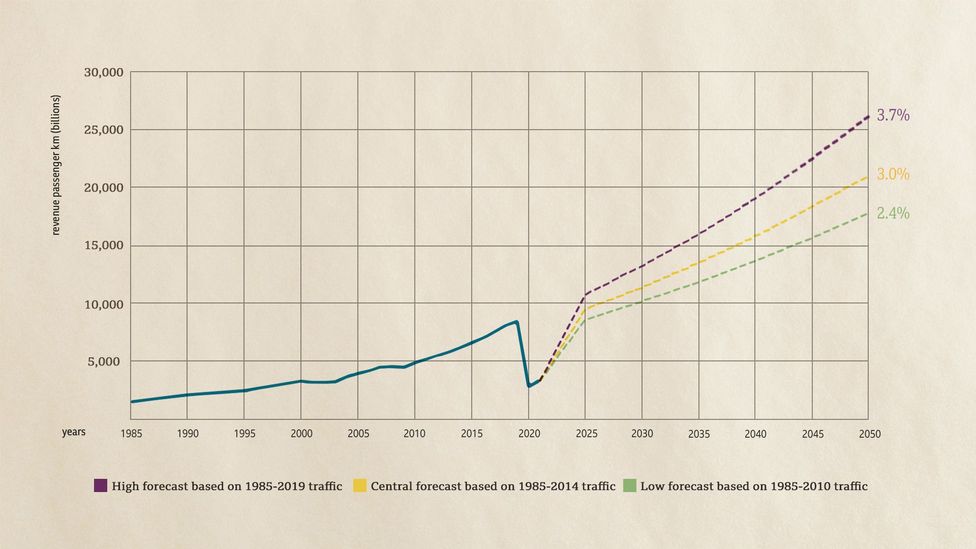
Long term forecasts indicate that air traffic will return to pre-Covid-19 levels and rise, although by how much remains to be seen (Credit: ICCT)
Impact on people
But how would this new world without aeroplanes affect people around the globe? Many people's daily lives would be unaffected, at least directly. Just 11% of the global population took a flight in 2018 and at most 4% took an international flight. Even in the UK, over half of people didn't fly at all in a given year, even before the pandemic. Around the globe, most flights are taken by a tiny minority of frequent flyers.
"It doesn't affect many people at all on that basis," says Stefan Gössling, aviation researcher at Linnaeus University in Sweden. "We had a period with close to zero flights [due to the Covid-19 pandemic], and I think what we learned is that we can do without."
Airports would go silent, providing relief to locals previously impacted by the noise. In a matter of days, the elevated air pollution levels found near to airports would also drop, with a knock-on reduction in health risks such as asthma and heart disease for local residents.
Other countries would be hard hit – especially islands heavily dependent on tourism and largely only accessible by plane
People with homes in two countries would hastily have to choose which location they wanted to live in, while people who fly frequently for weekend trips and holidays would also face a large change in lifestyle. Holidays would mostly need to be done in places accessible by train, bus, car and ferry, nudging people towards staying in their own or nearby countries.
Countries with large tourism deficits – meaning people from that country spend more on holiday abroad than the tourists visiting the country spend – would benefit from this. China, which has the world's largest tourism deficit, and the UK, which had a tourism deficit of £34bn ($42bn) in 2019 would be among the winners economically (although the UK government also estimates that the aviation industry contributes at least £22bn ($27bn) to the UK economy).
This could in turn lead to better leisure opportunities for local people in these economies, also providing new jobs, says Cairns. "If you make it an attractive place for people within your country to come and visit, you probably also mean that the local residents have better facilities."
But other countries would be hard hit – especially islands heavily dependent on tourism and largely only accessible by plane. The huge decline in travellers in 2020 put over 100 million tourism jobs in jeopardy: many would be permanently lost.
"As much as there would be problems from stopping air travel tomorrow, I would put that at the top of the list," says Leo Murray, director of innovation at climate charity Possible. "It's probably the most important thing. Because there's a whole bunch of people who would need to find new livelihoods." Other countries would need to find ways to support these countries, he adds.
The grounding of all planes would also affect the 11 million people around the world who work directly in the aviation industry, such as airport operators, customs and immigration roles, flight attendants, pilots and engineers. A further 18 million people working in businesses supported by aviation indirectly, such as fuel suppliers and call centres, would also face unemployment.
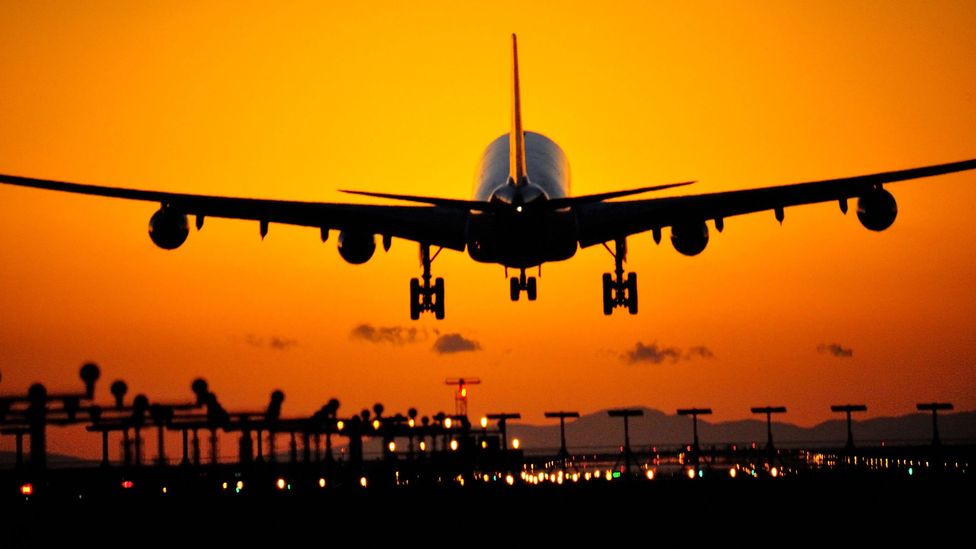
Aeroplanes release both CO2 and other types of emissions which lead to a warming atmosphere (Credit: R. Wang/ Alamy)
Another difficult challenge would be people who live far away from their loved ones and families. "Probably the most challenging area is visiting family and friends," says Cairns. "I think that would cause the greatest pain."
Malithi Fernando, a policy analyst at the International Transport Forum, thinks many people would end up living closer to the people they visit often. Many people would relocate to be closer to their loved ones, requiring more flexible workplaces allowing remote work and more time for travel, she says.
Corporate climate targets would see an instant boost as business travel ground to a halt – 90% of business travel emissions currently come from aviation. Attending conferences and business meetings in other countries would become the exception, with virtual meetings now the standard. But projects which require in-person visits would struggle to adjust. Some supply chains would also see disruption: just 1% of global trade by volume is transported by air, but products sent by aeroplane tend to be high value.
The 47,000 tonnes of fresh or chilled fish flown from London Heathrow airport each year would need to be delivered frozen if going by ship
Some of this freight, such as paper, printed books and vehicle parts, could be transported by ship, lowering their carbon footprints to one-tenth or one-twentieth of their previous level, though supply chains and timelines would need huge adjustments. Businesses and consumers are becoming increasingly used to having globally sourced goods delivered within days: a world with no flying would lengthen this time considerably.
Food air freight would also require adjustment. The 47,000 tonnes of fresh or chilled fish flown from London Heathrow airport each year, for example, would need to be delivered frozen if going by ship. Highly perishable fresh fruits and vegetables like grapes, mangoes and avocados would disappear from supermarkets in the winter, with a rise in the consumption of frozen fruits instead. The availability of flowers grown overseas would plummet. "There's lots of things that are flown because of their short shelf-life and because you want them fresh on the table," says Gössling.
However, you would not see major shortages in supermarkets or clothing stores in a world without planes, says Fernando. "[Bulk goods] are transported using a very different supply chain network, shipping across oceans, and then road or rail or barges and inland waterways. So overall, I think there would be a smaller impact on freight."
Some air cargo is lifesaving, however. Air freight is used to ship medical supplies and pharmaceuticals around the world. It played a major role in delivering vaccines during the pandemic, for example. It is also used during humanitarian disasters to deliver food, water and medicines. Finding alternatives for delivering time-sensitive medicines or urgent food supplies around the world would not be easy. "With more hurricanes, typhoons, and everything else caused by climate change [this] obviously isn't going to go away, it might become an increasing issue," says Cairns.
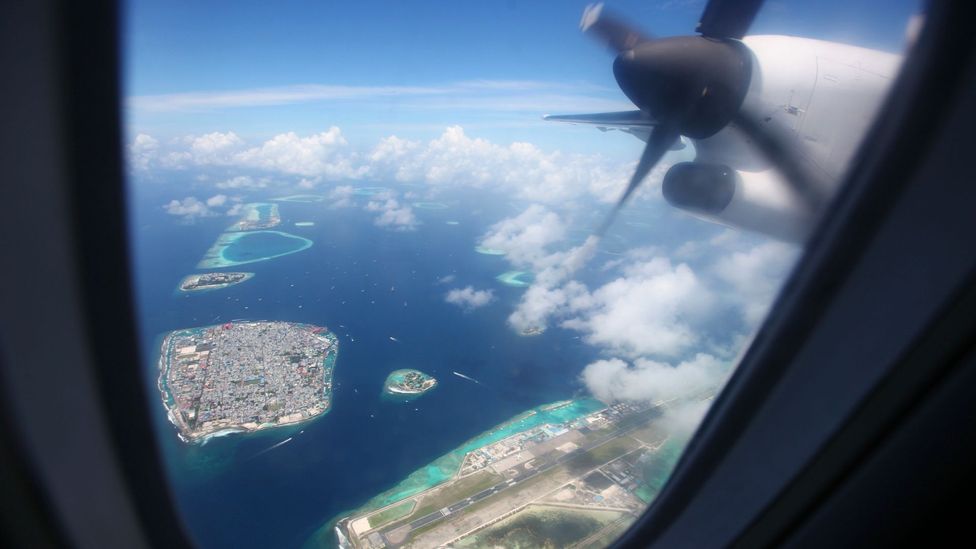
Island countries heavily dependent on tourism and largely only accessible by plane would be hard hit in a world without planes. (Credit: P. Schatz/Alamy)
Travelling far in a world without planes
A world where flying was abruptly stopped would create many complications for travel. "'Suddenly' is always bad for people because it forces them to make decisions and everything is very disruptive," says Gössling. "So if you really change things overnight, it's difficult."
Aviation has a unique combination of two factors not seen together in any other transport mode, says Fernando. Firstly, it's fast, both in terms of its speed and its ability to go directly from a to b, easily passing over seas, mountains and lakes. Second, unlike rail and road, it does not require dedicated infrastructure en route between two destinations, so typically requires lower investment up front.
The best alternative to aeroplanes when it comes to speed is high-speed rail – trains with average speeds over around 200km (124 miles) per hour. "It's the only way we can move a great number of people at high speeds over large distances at a reasonable price," says Gössling.
China is the undisputed leader in high-speed rail, with well over half the world's lines – some 40,000km (25,000 miles)of high-speed rail lines, with plans to raise this to 70,000km (43.000 miles) by 2035. China's longest route is almost 2,300km (1,400 miles), stretching between Beijing and Guangzhou, a similar distance to that between New York and Miami, or Paris and Tallinn, with a travel time of approximately eight hours.
"[China] has done great work in terms of not just establishing high-speed railways but also in terms of creating some of the best in the world, without vibrations, that are really, really comfortable in terms of taking people at high speeds through the country," says Gössling.
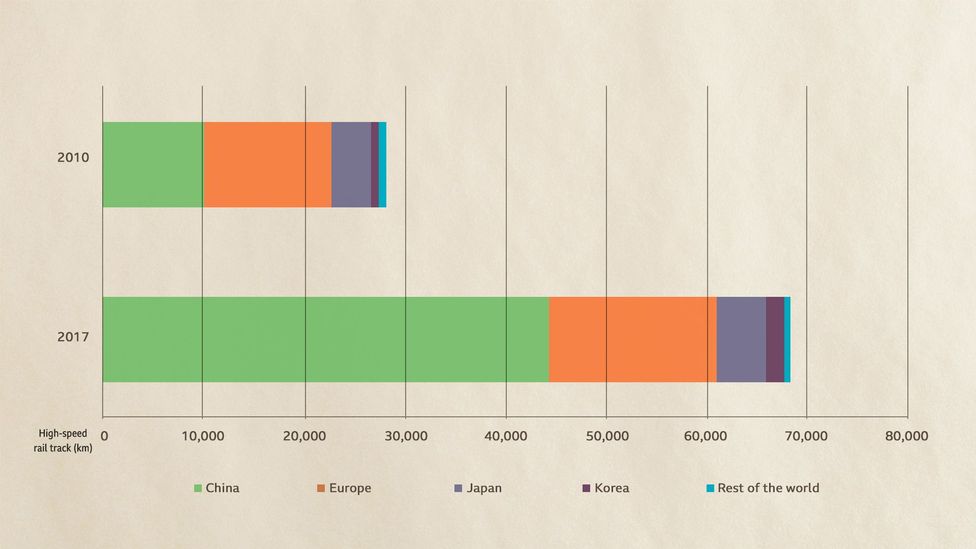
Data on the length of high-speed rail track in key regions in 2010 and 2017 shows China now has the majority of the world's high-speed rail lines (Credit: IEA)
Japan, Europe and South Korea also have fairly strong networks. The US, though, has yet to complete a single high-speed rail line.
A recent analysis from the International Council on Clean Transportation (ICCT) found that even today, around 26% of US flights could be replaced by car, bus or high-speed rail. Another 28% of flights could in theory be replaced by high-speed rail, but are between less populated urban centres, meaning not enough people would travel on them make the investment in high-speed rail infrastructure worth it, says Sola Zheng, a researcher at ICCT who did the analysis. In a world of no flying, however, there would likely be more political and taxpayer willingness to build high-speed rail, as well as a higher tolerance for travel time, says Zheng.
Attention would also increase on ultra-high-speed trains. The world's current fastest train, the Shanghai Maglev, has a maximum commercial speed of 460km (286 miles) per hour and an even faster magnetic levitation line is being built in Japan, which will have a maximum speed of 505 km (314 miles) per hour.
CARBON COUNT
The emissions from travel it took to report this story were 0kg CO2. The digital emissions from this story are an estimated 1.2g to 3.6g CO2 per page view. Find out more about how we calculated this figure here.
Where high-speed networks wouldn't work due to high upfront costs, lower speed rail would also be a good option, says Fernando. "Regular rail networks might make more sense in a larger variety of situations." Sleeper trains could make overnight travel of 8-12 hours convenient. There is scope for far more innovation and development on sleeper trains, says Cairns. "The consequence is that the journey becomes part of the holiday."
The money previously spent on subsidies to airports and airlines could go instead to rolling out this rail network. Huge care would be needed in doing this though, as rail infrastructure can have negative impacts on local people and natural habitats. "There are also of course emissions associated with the infrastructure," notes Fernando. Most important for rail would be avoiding any new non-electrified rail networks, she adds.
Without planes, long-distance coaches would also become seen as a viable way to travel long distances, especially with a focus on comfort. Fernando notes that buses have one of the two unique factors aviation has: the flexibility of not requiring new en route infrastructure. "You're likely going to be using roads that are already there. So they are a low-investment option for longer distance travel."
Driverless cars, once they become available, could also provide a viable alternative to flying, also allowing people to sleep or work through long journeys
The expansion of other ways to travel would also provide new jobs for newly unemployed aviation workers, from engineers to flight attendants. "Airlines have always had this kind of cachet as a sort of luxury kind of leisure type activity," says Cairns. You could imagine a luxury airline running luxury coach tours to Spain with a stopover in a French chateau or gourmet market on the way, for instance, she says.
Driverless cars, once they become available, could also provide a viable alternative to flying, allowing people to sleep or work through long journeys. However, large-scale use of single-occupancy driverless cars – even if they are electric – would be bad news for the climate and congestion, says Fernando. A shared-occupancy model could overcome this issue, she adds.
Cross ocean
Of course, there's one obvious gap where rail and road simply couldn't help: journeys across seas and oceans. In a world of no flying, the main alternative would be ships: already used to move around the vast majority of the world's freight.
Travelling from England to New York by ship takes around seven nights; journeys further afield take weeks. Personal journeys of this kind would plummet, with people only willing to undertake them for unique reasons or very infrequently. "I find it a little bit hard to imagine overseas passenger transport becoming hugely popular unless we have some sort of lifestyle changes," says Fernando.
Of course, ships themselves release plenty of carbon, and a vast increase in passenger travel would be bad news for the climate. Slowing ships down is among the main short-term measures for reducing shipping emissions, Fernando notes: not a great proposition for speedy cross-ocean journeys.
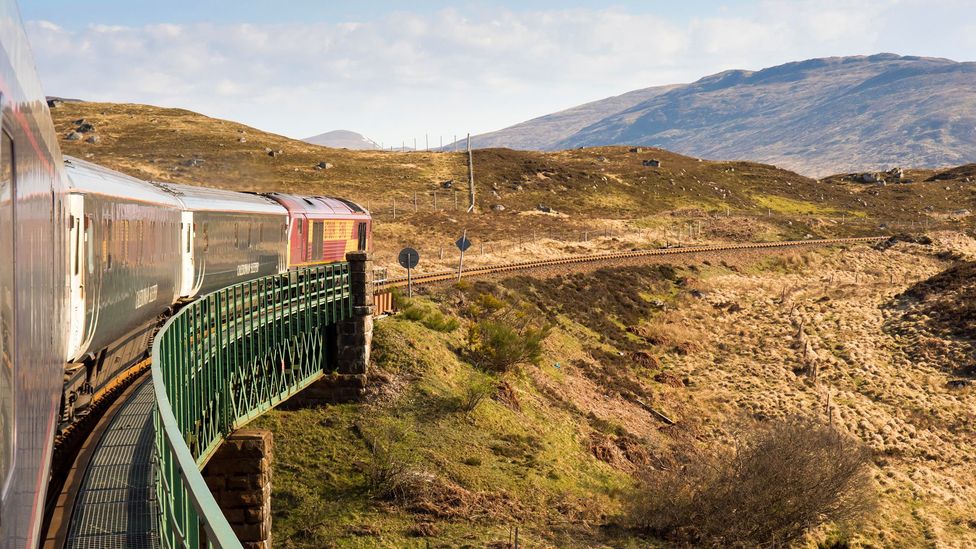
Sleeper trains, such as The Caledonian Sleeper train from London to Scotland, can make longer train journeys more convenient Credit: Joe Dunckley/Alamy)
Airships – large, balloon-like vehicles which use gases lighter than air, such as helium or hydrogen, to keep them in the air – are far slower than aeroplanes, but could potentially meet some of the needs currently met via air travel. "I think airships would probably compare favourably with ships," says Murray. "And probably passengers would prefer airships, because you get seasick on the ocean." They could be especially useful for passenger transport to island nations, behind deserts, or across mountain ranges, he adds.
However, airships would likely struggle to transport many people quickly across long distances. "It's hard to see how that could ever be scaled up to become a significant transport," says Gössling. "To build such huge structures in ways that are really storm proof, for instance, I think that would be very difficult."
Changing technology
To accommodate the longer times needed to travel by ship and train, employers would need to become more flexible in how they give holidays, or allow people to work on the journey.
There would also be fresh impetus for new creative thinking about how to better connect people together without the need for long-distance travel. More money would pour into technology companies developing better virtual meeting spaces, further accelerating the technology beyond the changes seen in the Covid-19 pandemic. Cairns foresees meetings where all participants are either there physically or represented by a screen, with remote control cameras and directional sound replicating the experience of people actually being at the table with you.
[For] a major reduction in aviation, I think it's about when not if. I think the climate data is clear on that really – Sally Cairns
Fully virtual spaces would also flourish. Gössling imagines conferences using scanned 3D avatars of participants which can easily move towards and interact together, allowing them to feel they are really there. The major pediment would probably be people joining from different time zones, he adds.
Meanwhile, empty airports around the world could be repurposed for other activities, such as hosting conferences, meetings or festivals. "Airports tend to be where you get transport links converging. So you've got very good connectivity if people wanted to get to those [as] meeting hubs."
Airports could also be used as local community spaces. "You can also imagine them becoming active travel parks where people can go and try out scooters and hoverboards and bikes and everything else," says Cairns. Grounded planes themselves could be used for unique hospitality spaces, such as hotels, restaurants and clubs

The cockpit room at the JumboStay, a hostel created from a converted Boeing 747 aeroplane (Credit: E. Remsberg/Getty Images)
It's unlikely we'll ever wake up to a world without any planes. And we wouldn't want to: aviation has brought cultures together, prompted new experiences and journeys and provides urgent medicines, humanitarian aid and support for people in need.
But the huge climate impact of flying, and the difficulty in decarbonising the sector in the short-to-medium term, does raise the question of whether we should put more focus on other ways to travel, as well as avoiding travelling long-distance when we don't really need to.
"[For] a major reduction in aviation, I think it's about when not if. I think the climate data is clear on that really," says Cairns. "If we could get it down to just the hardcore of stuff that we thought was really essential, then actually we could manage that fine. But we have to go from such a different place given where we are at now."
Fortunately, opportunities do already exist to reduce our dependence on aviation. A focus on our own communities, local tourism and virtual meeting places, as we've already seen during the pandemic, could go a long way towards reducing the urge to fly.
If the aviation industry begins seriously decarbonising planes, we can ultimately hope to move to a world where zero carbon trains and planes are equally as common
In trains, meanwhile, which are far lower carbon than planes, we have a strong alternative to planes. The International Energy Agency has highlighted the shift from aeroplanes and private cars to rail as a key strategy for reaching net zero emissions, and advised governments to set out targeted policies to improve rail.
High-speed rail in particular can replace air travel, with new lines reducing aviation transport on the same routes by as much as 80%. But slower rail is just as important: sleeper trains are now having a "renaissance" in Europe, for example, driven by passenger concern for the climate.
By 2030, the world needs to cut annual greenhouse gas emissions by around 25 times aviation’s current emissions on top of what governments have already pledged to limit global warming to 1.5C. So eliminating aviation would make a small, but still significant, contribution to closing the gap between our current emissions pathway and where we need to be.
If the aviation industry begins seriously decarbonising planes, we can ultimately hope to move to a world where zero carbon trains and planes are equally as common. For now, though, reducing flights as much as possible remains our best option for limiting the large climate impact of this sector.
Jocelyn Timperley is a freelance climate change reporter and editor. You can find her on Twitter @jloistf.
No comments:
Post a Comment